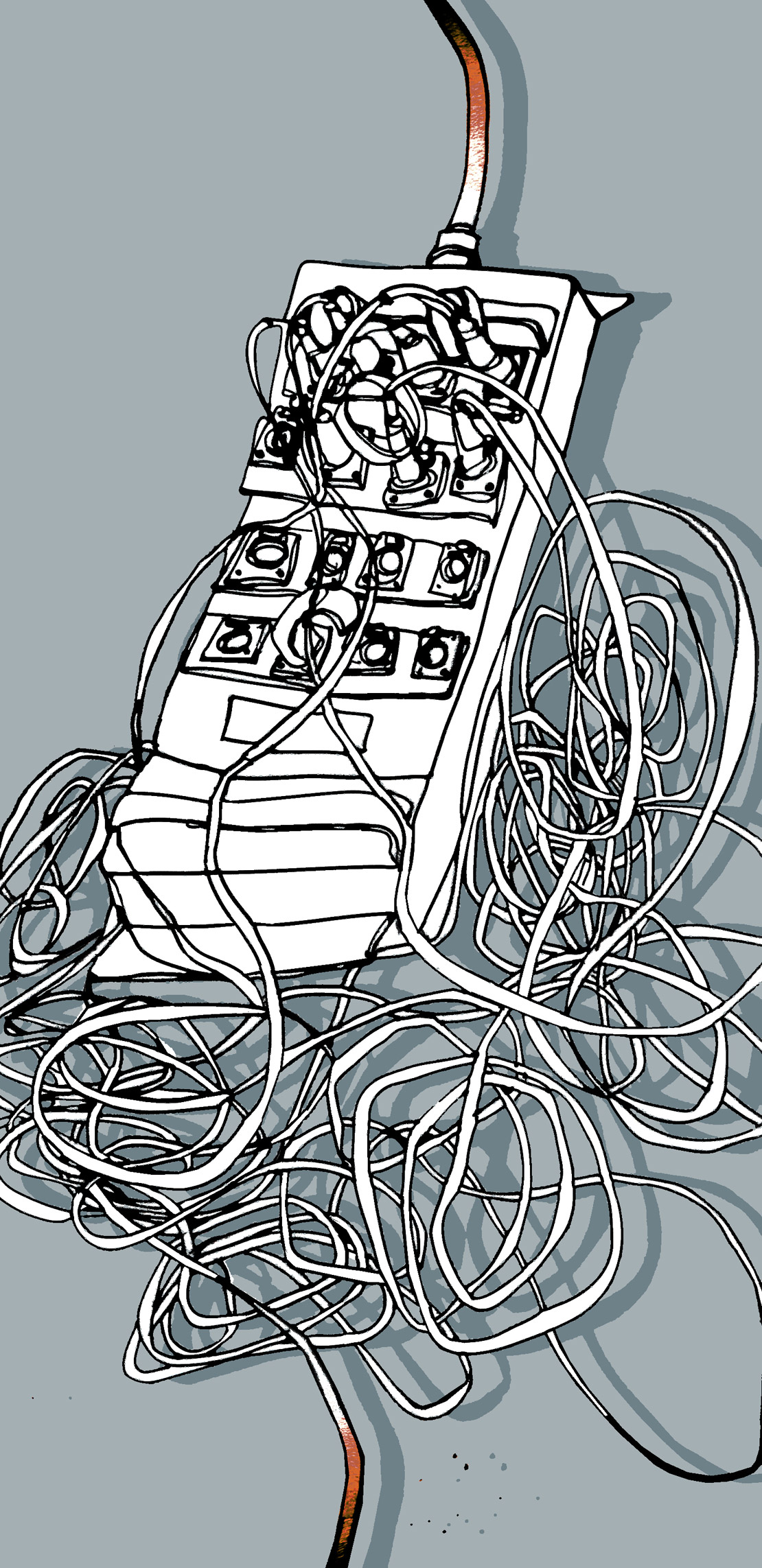Monofilter is a useful tool for managing bass frequencies and correcting phase-coherence issues. Monofilter re-aligns and balances low frequencies, resulting in a louder, more focused, and better defined mix, while leaving the aesthetic of the mix intact.
Why do we need to pay attention to bass phase-coherence, and how do things get messed up? There are many scenarios. During tracking, stereo mics might not be set up in proper configuration. Sources might be different distances from spaced-pair mics. In mixing, the engineer might not have paid attention to where low frequencies were panned, or may add delay and stereo effects that alter the bass. Being diligent when it comes to phase issues can mean the difference between a focused mix and one that is thin, hollow sounding, or worse. In an ironic turn of events, mixers striving for a big bass sound tend to turn up the low end, which usually makes things boomy, tubby, and sloppy. Conversely, a mix that has proper bass phase- coherence has chest-smacking impact and floor-moving shake.
As recording engineers, we should understand the effects of poorly managed bass. First, with the resurgence of vinyl, it is crucial for low frequencies to be coherent. Out-of-phase or hard-panned bass can cause the stylus to skip grooves if the waves are too big. At the cutting stage, having phase-coherent bass will allow the lacquer to be cut at a hotter level with less noise. Moving to live applications, most club systems still use mono subwoofers and most public address systems are mono. In the broadcast realm, many televisions still use mono features, and FM radio will collapse from stereo to mono as reception is reduced.
Monofilter works by reducing the stereo spread of signals below a user-defined crossover point. Several metering and visualizer options for the pre and post-processed signals permit you to tailor Monofilter to your working preferences. This allows you to see what audio below the crossover exists and how it is being adjusted. Other parameters include crossover steepness, filter type, monitor out (mono, stereo, and mute), auto level, and stereo width around the crossover frequency. Quality options include low-latency, linear-phase, and high- quality linear-phase. In low-latency mode, Monofilter uses a couple of IIR all-pass filters with nonlinear phase response to align the phase of the two channels in the bass frequencies. In the two linear-phase modes, Monofilter applies a phase-angle adjustment in the complex frequency domain. Adjusting parameters is as simple as dragging control-nodes on the display. A wide list of presets showcases some of Monofilter's capabilities as well as provides a starting point for new sessions.
Some mastering engineers choose to address bass phase issues with a sum-and-difference EQ. Monofilter has some advantages over this approach. While M/S removes out-of-phase signals by cutting them from the track, Monofilter time-aligns the out-of-phase bass and adds it back to the signal. Without Monofilter's processing, this approach would result in cancellation. Another lesser known example deals with hard panning. Take a mix that starts with no signal in the left channel while a rhythm guitar part starts the song in the right channel. (This thing happens in rock with some regularity.) If you apply an M/S-based equalizer to the entire track, the decoding process will spill some of the right-channel guitar back into the left speaker. The intro will no longer sound the same; the right-channel guitar will be ghosted into the left channel. Sending that master out will result in displeasure from the mix engineer, producer, and artist. Monofilter helps to avoid such situations.
You can do other things with Monofilter. The crossover filter is pretty transparent. It can be used to split an audio signal into two frequency bands for individual processing. For example, mult the audio onto two tracks, and use two identical instances of Monofilter, one on each track. Select the Mono output button on one instance for the low-frequency mono information and the Stereo output button on the other for the stereo information above the threshold frequency. You could also use a copy of a mix, letting only the bass through and compressing the heck out of it. That's one trick for adding a lot of foot to a mix while keeping the dynamics in place. Monofilter is also killer on drum room mics, which often fight with overheads and close mics.
Proper phase coherence in the bass frequencies can improve the sound of your mixes and help your client's work translate across a wide variety of playback systems and environments. Having a tool like Monofilter can be a session saver. And the longer you use it, the more the analysis tools teach you. Soon your ears gain proficiency at hearing these problems, and you become a better engineer. It is rare that a plug-in helps our clients and improves our own skillset. Monofilter is one of those applications. ($99 direct; www.nugenaudio.com)
-Garrett Haines, www.treelady.com




_disp_horizontal_bw.jpg)